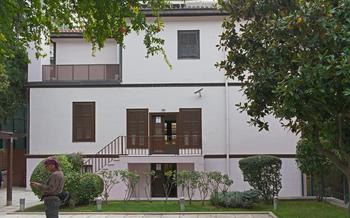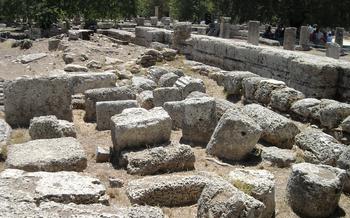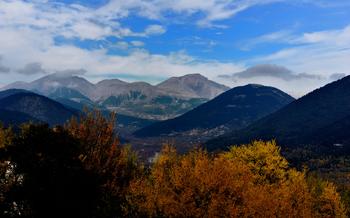
The Salt Pans of Kalloni
- The Salt Pans of Kalloni: A Unique Experience
- Getting There: How to Reach the Salt Pans of Kalloni
- Nearest airport and public transportation options
- Driving directions from Mytilene
- Tours and guided visits to the salt pans
- Best Time to Visit: When to Experience the Salt Pans at Their Finest
- Opening Hours and Entrance Fees
- Things to Do at the Salt Pans of Kalloni
- Exploring the Surrounding Area: What Else to See and Do Near the Salt Pans
- The Salt Museum: Delving into the History of Salt Production
- The Salt Shop: Bringing Home a Taste of Lesvos
- Local Cuisine: Savoring the Flavors of Lesvos
- Accommodation: Where to Stay Near the Salt Pans of Kalloni
- Planning Your Trip: Essential Tips for a Smooth Visit
- Accessibility: Ensuring a Welcoming Experience for All
- Sustainability: Protecting the Natural Beauty of the Salt Pans
- History and Culture: Uncovering the Rich Heritage of the Region
- Insider Tip: A Unique Perspective on the Salt Pans
The Salt Pans of Kalloni: A Unique Experience
The salt pans of Kalloni are a unique and fascinating destination located on the island of Lesvos in Greece. These ancient salt flats have been in operation for centuries, and they still produce some of the finest sea salt in the world. The landscape created by the salt pans is truly breathtaking, with its shimmering white salt flats, vibrant pink and green waters, and abundant birdlife. A visit to the salt pans is a must-do for any traveler looking to experience the natural beauty and cultural heritage of Lesvos.
History and significance of the salt pans The history of the salt pans of Kalloni dates back to ancient times, when the island was under Byzantine rule. The Byzantines were the first to recognize the potential of the salt flats, and they began to harvest salt for both culinary and commercial purposes. Over the centuries, the salt pans have been passed down from generation to generation, and they are now a vital part of the local economy.
The process of salt production The process of salt production at the Kalloni salt pans is a natural and sustainable one. The seawater is evaporated in the sun, leaving behind the salt crystals. The salt is then harvested by hand and packaged for sale. The Kalloni salt pans are one of the few places in the world where salt is still produced in this traditional way.
The importance of the salt pans for the local economy The salt pans of Kalloni are an important source of income for the local community. The salt is sold both domestically and internationally, and it is used in a variety of products, including food, cosmetics, and pharmaceuticals. The salt pans also attract tourists from all over the world, who come to experience the unique landscape and learn about the history of salt production.
The unique landscape created by the salt pans The salt pans of Kalloni create a truly unique and beautiful landscape. The shimmering white salt flats are surrounded by vibrant pink and green waters, and the area is home to a wide variety of birdlife. The salt pans are a popular spot for birdwatching, and visitors can see a variety of species, including flamingos, herons, and egrets.
Getting There: How to Reach the Salt Pans of Kalloni
Nearest airport and public transportation options
The nearest airport to the Salt Pans of Kalloni is Mytilene International Airport (MJT), located about 40 kilometers away. From the airport, you can take a taxi or rent a car to reach the salt pans. Public transportation options are limited, but there is a bus that runs from Mytilene to Kalloni several times a day. From Kalloni, you can take another bus or taxi to the salt pans.
Driving directions from Mytilene
If you are driving from Mytilene, take the N35 road towards Kalloni. After about 30 kilometers, you will see signs for the salt pans. Turn left onto the road leading to the salt pans and follow it for about 5 kilometers.
Tours and guided visits to the salt pans
There are several tour operators that offer guided tours of the Salt Pans of Kalloni. These tours typically include a visit to the salt museum, a walk around the salt pans, and an opportunity to learn about the history and process of salt production. Tours can be arranged through local travel agencies or online.
Best Time to Visit: When to Experience the Salt Pans at Their Finest
The best time to visit the Salt Pans of Kalloni is during the summer months (June to August), when the weather is warm and sunny. This is when the salt production is in full swing, and you can witness the traditional salt-making process firsthand. The salt flats are transformed into a mesmerizing landscape of shimmering white crystals, creating a unique and unforgettable sight.
While the summer offers the ideal conditions for exploring the salt pans, it's important to consider the warm temperatures, especially during the peak of the season. Be sure to bring sunscreen, a hat, and plenty of water to stay hydrated.
The spring (April to May) and autumn (September to October) months also offer pleasant weather, with fewer crowds and a milder climate. This can be an excellent time to visit if you prefer a more tranquil experience.
It's worth noting that the salt pans are closed during the winter months (November to March) due to the harsh weather conditions. During this time, the salt flats are flooded with seawater, and salt production is paused.
Special events or festivals related to the salt pans:
-
The annual Salt Festival is held in August, showcasing the unique traditions and culture of the region. This vibrant festival features live music, traditional dancing, and exhibitions related to salt production.
-
The Feast of the Assumption is celebrated on August 15th in the nearby village of Kalloni. This religious festival honors the patron saint of the village and coincides with the peak of the salt production season, making it a special time to visit the salt pans.
Opening Hours and Entrance Fees
The salt pans are usually accessible to visitors throughout the year, although their working period begins in early spring and extends until late autumn. The opening hours are generally from sunrise to sunset, but it's advisable to check the official website or contact the local tourist information office for any specific changes or updates.
Admission to the salt pans is typically free of charge, allowing visitors to explore the site at their leisure and enjoy the stunning scenery. This open access reflects the local community's pride in their cultural heritage and their desire to share the beauty of the salt pans with visitors.
Things to Do at the Salt Pans of Kalloni
The Salt Pans of Kalloni offer a range of activities that allow visitors to immerse themselves in the unique environment and rich cultural heritage of the region. Whether you're a nature enthusiast, a history buff, or simply seeking a tranquil escape, there's something for everyone at these captivating salt flats.
Walking Trails and Hiking Paths:
Explore the Salt Pans of Kalloni at your own pace by following the well-marked walking trails and hiking paths that meander through the salt flats. These trails offer a chance to observe the intricate patterns of the salt crystals, spot local flora and fauna, and take in the serene beauty of the landscape.
Birdwatching:
The Salt Pans of Kalloni are a haven for birdlife, attracting a diverse array of species throughout the year. Bring your binoculars and birdwatching guide to spot flamingos, egrets, herons, and many other migratory birds that find refuge in the shallow waters and salt marshes.
Photography:
The Salt Pans of Kalloni present an extraordinary opportunity for photographers to capture stunning images of the unique landscape. The vibrant colors, geometric patterns, and reflections of the salt flats create a mesmerizing spectacle, particularly during sunrise and sunset.
Guided Tours:
To delve deeper into the history, cultural significance, and salt production process, join a guided tour of the Salt Pans of Kalloni. Experienced guides will share fascinating insights into the traditional methods of salt making and the importance of these salt flats for the local community.
Exploring the Surrounding Area: What Else to See and Do Near the Salt Pans
The Salt Pans of Kalloni are nestled in a region rich in natural beauty and cultural heritage. Take advantage of your visit to explore the surrounding area and discover hidden gems. Just a short drive away, you'll find pristine beaches and secluded swimming spots, perfect for cooling off on a hot summer day. For history buffs, there are several ancient ruins and Byzantine churches to explore, offering a glimpse into the region's rich past. Don't miss the traditional villages that dot the landscape, where you can savor authentic Greek cuisine and experience the warm hospitality of the locals. Indulge in fresh seafood, succulent lamb dishes, and homemade desserts while immersing yourself in the vibrant local culture.
The Salt Museum: Delving into the History of Salt Production
Immerse yourself in the rich history of salt production at the Salt Museum, a treasure trove of knowledge and interactive experiences dedicated to this ancient craft. Through captivating exhibits and displays, you'll journey through the centuries, learning about the techniques, tools, and traditions that have shaped the salt industry on Lesvos. Interactive activities and educational programs bring the history to life, allowing you to engage with the process and gain a deeper understanding of its significance. Guided tours provide expert insights into the salt-making heritage of the region, shedding light on the cultural and economic importance of this valuable resource. Don't miss this opportunity to delve into the fascinating world of salt production and uncover the stories behind the glistening white crystals that grace our tables.
The Salt Shop: Bringing Home a Taste of Lesvos
At the salt pans of Kalloni, visitors can take home a taste of Lesvos by visiting the on-site salt shop. This charming shop offers a variety of salt products, from the classic coarse sea salt to flavored salts infused with herbs, spices, and citrus. Shoppers can also find unique souvenirs and gifts made from salt, such as decorative salt lamps, bath salts, and salt scrubs.
In addition to salt products, the shop also sells a selection of local products and delicacies. Visitors can sample traditional Greek sweets, such as baklava and loukoumades, as well as savory snacks like olives, cheeses, and cured meats. The shop also offers a variety of wines and spirits produced on the island of Lesvos, making it the perfect place to pick up a gift for friends and family back home.
Local Cuisine: Savoring the Flavors of Lesvos
A visit to the Salt Pans of Kalloni is not complete without sampling the culinary delights of Lesvos. The island's cuisine is a delightful blend of Greek and Turkish influences, with fresh seafood, local produce, and aromatic herbs taking center stage.
In the restaurants and tavernas near the salt pans, you can indulge in traditional dishes such as "saganaki", a dish of fried cheese served with lemon and oregano, or "gemista", a flavorful combination of stuffed tomatoes and peppers. The island's signature dish, "moustokouloura", a sweet bread made with grape must, is a must-try for dessert.
For a truly immersive experience, consider taking a cooking class and learning how to prepare some of these local delicacies yourself. You'll not only gain insights into the culinary traditions of Lesvos but also create lasting memories to cherish.
Accommodation: Where to Stay Near the Salt Pans of Kalloni
When planning a trip to the Salt Pans of Kalloni, finding suitable accommodation is essential. Fortunately, there are various options to suit different preferences and budgets.
Budget-conscious travelers can opt for hostels or guesthouses located in nearby villages, such as Kalloni or Skala Kallonis. These accommodations offer basic but comfortable rooms at affordable prices.
For a more luxurious experience, there are boutique hotels and villas available in the area. These establishments often provide stunning views of the salt pans and the surrounding landscape.
If you prefer a unique accommodation experience, consider staying in a traditional stone house or a villa. These properties offer a glimpse into the local culture and architecture.
To find the best deals and discounts on accommodation, it's advisable to book in advance, especially during the peak tourist season. Online booking platforms and travel agents can help you compare prices and availability.
Planning Your Trip: Essential Tips for a Smooth Visit
To fully enjoy your visit to the Salt Pans of Kalloni, here are some essential tips to ensure a smooth and enjoyable experience:
-
Plan the Duration of Your Visit: While a short visit can give you a glimpse of the salt pans, allotting at least half a day allows you to leisurely explore the area, take photos, and soak in the unique atmosphere.
-
Pack the Essentials: Comfortable shoes are a must for walking on the uneven terrain around the salt pans. Sun protection, including a hat, sunglasses, and sunscreen, is crucial, especially during the summer months. Bring a camera to capture the stunning landscapes and wildlife.
-
Learn Basic Greek Phrases: While many locals speak English, learning a few essential Greek phrases can be helpful for communicating with the salt workers and other visitors. "Kalimera" (good morning) and "Efcharisto" (thank you) are good starting points.
Accessibility: Ensuring a Welcoming Experience for All
The Salt Pans of Kalloni are committed to providing an accessible and inclusive experience for all visitors. The site features a network of well-maintained walking trails and viewing platforms that are designed to accommodate visitors with disabilities. These trails offer a safe and enjoyable way to explore the salt pans and appreciate their unique beauty. Wheelchair ramps and accessible restrooms are also available to ensure that everyone can fully experience this natural wonder. Additionally, the Salt Pans of Kalloni offer assisted tours for visitors who may require additional support. These tours are led by experienced guides who are trained to provide assistance and ensure that everyone has a safe and enjoyable visit. By creating an accessible and welcoming environment, the Salt Pans of Kalloni strive to make this unique destination accessible to all, regardless of their abilities.
Sustainability: Protecting the Natural Beauty of the Salt Pans
The Salt Pans of Kalloni are a unique and fragile ecosystem that requires careful conservation efforts to ensure their preservation for future generations. As responsible travelers, we must minimize our environmental impact while visiting the salt pans and support local initiatives that promote sustainability.
Here are some guidelines for sustainable tourism at the Salt Pans of Kalloni:
Reduce Plastic Waste: Avoid single-use plastics and opt for reusable water bottles and shopping bags. Dispose of Waste Properly: Use designated waste bins and recycle whenever possible. Respect Wildlife: Observe birds and other wildlife from a distance and do not disturb their habitats. Stay on Marked Trails: Stick to designated walking trails to avoid damaging the delicate ecosystem. Support Local Businesses: Choose local restaurants and tour operators that prioritize sustainability. Educate Yourself: Learn about the importance of the salt pans and the local culture. Volunteer: Participate in conservation projects or volunteer with local organizations.
By following these guidelines, we can help preserve the natural beauty of the Salt Pans of Kalloni and ensure that this unique ecosystem continues to thrive for years to come.
History and Culture: Uncovering the Rich Heritage of the Region
The Salt Pans of Kalloni are not just a natural wonder but also a testament to the rich history and culture of Lesvos. Salt production in the area dates back to antiquity, with the ancient Greeks and Romans recognizing the importance of this precious commodity. Over the centuries, the salt pans have played a crucial role in the local economy, providing a livelihood for generations of salt workers and their families.
The salt pans have also shaped the cultural traditions and practices of the region. The annual Salt Festival, held every August, is a vibrant celebration of the salt industry, showcasing traditional music, dance, and local delicacies. Visitors can witness the traditional methods of salt production, learn about the history of the salt pans, and sample the delicious salt-infused dishes prepared by local chefs.
Exploring the Salt Pans of Kalloni is not just a journey into nature but also a journey into the past, where the history, culture, and traditions of Lesvos come alive.
Insider Tip: A Unique Perspective on the Salt Pans
To fully immerse yourself in the beauty of the salt pans, venture off the beaten path and explore some hidden gems. Ask the locals about secret spots for capturing the most stunning photographs of the salt flats, with vibrant colors and unique perspectives. Embark on an unforgettable boat ride through the salt pans, gliding past shimmering waters and towering salt mountains. This unique experience offers a breathtaking panorama of the landscape and a chance to witness the salt production process from a different angle. Engage with the friendly salt workers, who are always happy to share their knowledge and stories about this fascinating trade. Their insights will provide a deeper understanding of the history and cultural significance of the salt pans, creating a truly memorable and enriching experience.



